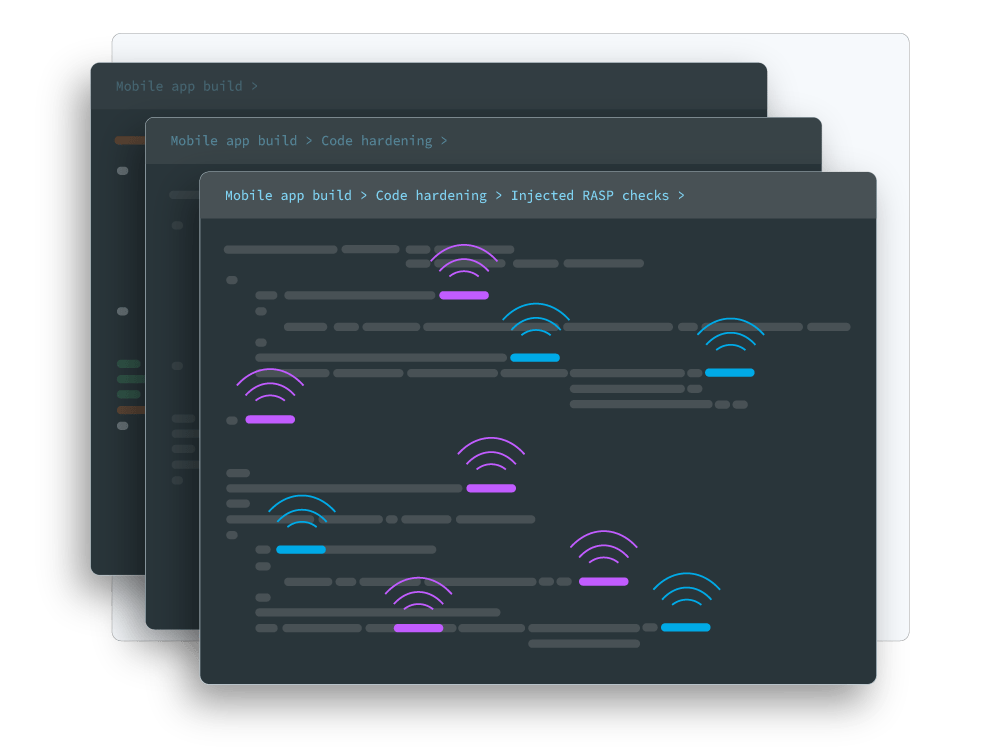-
Products
-
Solutions
-
Resources
-
Company
- Pricing
Products
Solutions
Resources
Company

Code obfuscation prevents any unauthorized party from accessing and gaining insight into the logic of an application, which prevents the attacker from extracting data, tampering with code, exploiting vulnerabilities, and more.

Mobile applications can be reverse engineered using readily available disassemblers and/or decompilers, making it easy for hackers to access and analyze the source code of your applications. Hackers can then:
Data of a sensitive nature may include; valuable intellectual property (such as custom algorithms), authentication mechanisms, in-app payment mechanisms, keys (API keys, hardcoded encryption keys etc.), credentials (database passwords etc.), the logic behind server communication, and much more.

Code Obfuscation is the practice of changing data and code to make it more difficult for attackers to read, understand, decompile, or disassemble. This is done by transforming the application’s code into an equally functional but less readable form. This helps to protect intellectual property and prevent reverse engineering.
Application developers must harden the code at various layers. This is the only way to achieve the level of protection necessary to safeguard sensitive data and property in mobile applications. Obfuscation is part of a broader mobile application shielding strategy.
Application shielding is a broad term for the process of making it more difficult for hackers to reverse engineer or modify an app. There are various techniques that can be used for application shielding, including code obfuscation and other code hardening techniques, as well as runtime mobile application self-protection (RASP).
All of this is undertaken without altering the function of the code or the end user experience in a meaningful way.
Code obfuscation is a technique of mobile app protection that is used to enhance the security of the software by making it more resistant to reverse engineering and unauthorized modifications. The goal is to delay hackers attempting to understand how the code works.

There are several techniques available today to obfuscate code. These include:
Name obfuscation
The replacement of readable names in the code by difficult to decipher alternatives
Control flow obfuscation
The modification of the logical structure of the code to make it less predictable and traceable
Arithmetic obfuscation
The conversion of simple arithmetic and logical expressions into complex equivalents
Code virtualization
The transformation of method implementation into instructions for randomly generated virtual machines